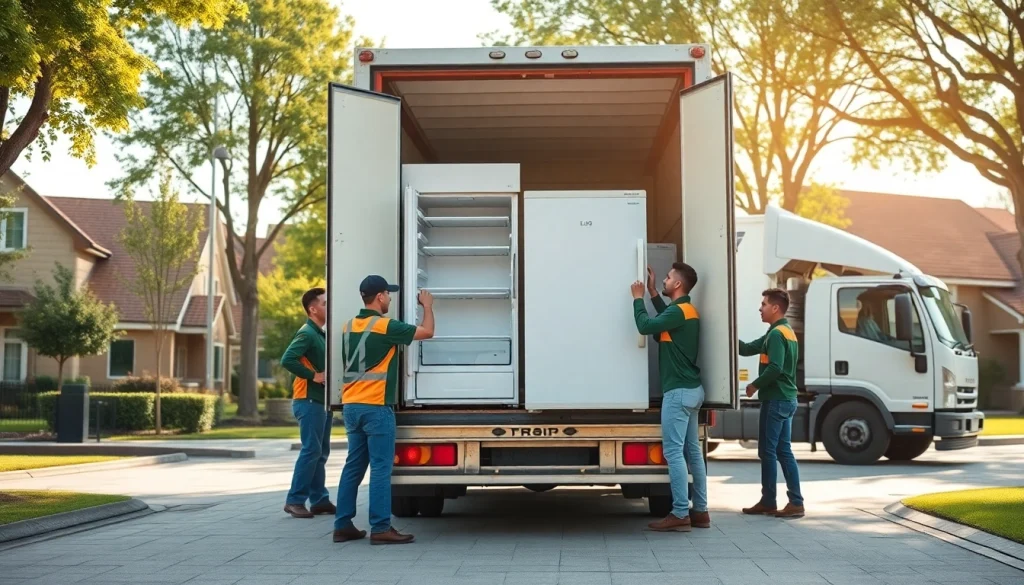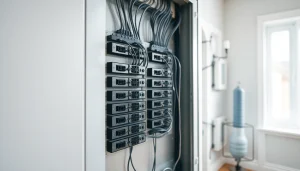
Understanding the Importance of Fridge Collection, Removal, and Disposal
In today’s rapidly evolving world, the responsibility of disposing of appliances responsibly has become increasingly crucial. As households upgrade their cooling systems, the Fridge Collection, Removal, and Disposal process emerges as a significant aspect of environmental stewardship. This article delves into why proper disposal of refrigerators is essential, outlining critical elements such as the environmental impact and potential health risks associated with improper practices.
Why Proper Disposal Matters
Proper disposal of refrigerators is not just a matter of convenience; it is a necessity for a sustainable future. Each item that reaches the end of its life cycle poses unique challenges. Understanding the disposal protocols ensures that we fulfill our ecological responsibilities, mitigate health risks, and comply with governmental regulations.
Environmental Impact of Refrigerators
Refrigerators are complex appliances that contain substances with the potential to harm the environment. For instance, many older models contain refrigerants like chlorofluorocarbons (CFCs), which deplete the ozone layer if released into the atmosphere. Similarly, hazardous materials like lead or mercury can leach into soils and waterways, causing long-term ecological damage. By ensuring proper collection, removal, and disposal, we can greatly reduce the environmental footprint of these appliances.
Health Risks of Improper Disposal
Improper disposal of refrigerators can pose significant health risks. Appliances left unattended can leak harmful substances that may contaminate the surrounding area. Additionally, there are physical dangers associated with discarded units, such as heavy components or sharp edges that create hazards for both humans and wildlife. These risks underscore the need for structured disposal methods that prioritize safety and ecological integrity.
Steps for Effective Fridge Collection
Effective fridge collection involves a systematic approach that encompasses assessment, preparation, and selecting the right services. By following these steps, you can ensure that your fridge is handled properly from the start of its disposal journey.
Assessing Your Fridge Type and Condition
The first step in the fridge disposal process is assessing your fridge type and condition. Different models have varying disposal requirements, and understanding these can streamline the process. For example, a functioning fridge may be suitable for donation or resale, while a broken one may require specialized disposal techniques due to its hazardous components. Document the age and type of the appliance, noting any significant issues that may affect its disposal.
Preparing for Collection: What to Do
Preparation is key to an efficient collection process. Start by clearing out the fridge, removing food and beverages, and defrosting, if needed. Additionally, you should disconnect it from its power source. If possible, compress the fridge’s doors for safe transportation and removal. Proper preparation not only facilitates safer handling for the removal team but also reduces the risk of environmental contamination.
Choosing the Right Collection Service
Selecting an appropriate collection service is essential for ensuring responsible disposal. Look for services that are certified and knowledgeable about local disposal regulations. These companies often take the additional steps required for safely recycling materials and disposing of hazardous substances. Additionally, customer reviews and recommendations can play an important role in identifying a reliable service provider.
Best Practices for Fridge Removal
With the right collection service chosen and the fridge prepared for pickup, focusing on best practices during removal is crucial. This phase involves ensuring safety, managing hazardous materials, and maintaining effective communication with the collection team.
Safety Protocols During Removal
Safety should always be the top priority when removing a fridge. Fridges can be heavy and unwieldy, making it essential to use appropriate lifting techniques to avoid injuries. Always wear protective gear, such as gloves and safety shoes, while handling the appliance. Additionally, securing the fridge during transport prevents potential accidents, ensuring both the safety of the removal team and others in the vicinity.
Handling Hazardous Materials
Fridges can contain hazardous materials that require special attention. It is crucial to ensure that the collection service follows local regulations regarding the handling of these substances. Services that are reputable will have protocols in place for the safe removal of refrigerants and other harmful materials. By partnering with these professionals, you can guarantee a compliant disposal process that prioritizes health and safety.
Effective Communication with Collection Teams
Good communication with collection teams can significantly improve the removal process. Provide comprehensive information regarding the fridge’s condition, age, and any issues that may complicate removal. This transparency allows the collection service to prepare adequately and manage their equipment and procedures accordingly, fostering a smoother experience.
How to Ensure Responsible Disposal
Ensuring responsible disposal hinges on making informed choices throughout the entire process. This section covers the nuances of disposal options, focusing on recycling versus landfill practices, as well as sustainability efforts and the importance of authorized disposal centers.
Recycling vs. Landfill Options
When it comes to fridge disposal, recycling should always be the preferred option. Many of the materials in a fridge, including metals and plastics, can be repurposed, which not only reduces waste but also conserves natural resources. Conversely, sending fridges to landfills has detrimental long-term effects on the environment. Seeking out recycling programs is crucial for responsible disposal and sustainability.
Contributing to Sustainability Efforts
Your choice in fridge disposal directly contributes to broader sustainability efforts. Initiatives such as recycling programs play a vital role in reducing landfill waste and promoting environmental stewardship. Supporting organizations committed to sustainable methodologies further heightens the impact of responsible disposal measures. By participating in these actions, individual consumers can champion the movement towards greener practices.
Locating Authorized Disposal Centers
Finding authorized disposal centers requires a bit of research. Most communities support specific facilities that specialize in appliance recycling. These centers ensure compliance with environmental laws while also providing guidance on the steps necessary for responsible disposal. By directing your fridge to these locations, you can rest assured that your appliance will be handled according to best practices.
Measuring Success in Fridge Collection, Removal, and Disposal
Implementing effective fridge collection and disposal practices is just the beginning; measuring their success is vital to improving future processes. Evaluating efficiency, soliciting feedback, and fostering community engagement are significant aspects of this assessment.
Tracking Collection Efficiency
Key Performance Indicators (KPIs) should be established to track collection efficiency. Metrics such as the time taken for collection, the number of fridges safely disposed of, and the percentage sent for recycling can offer tangible insights into how well disposal processes are functioning. Regular assessment of these KPIs allows for necessary adjustments, leading to improved efficiency over time.
Feedback Mechanisms for Continuous Improvement
Creating feedback mechanisms enables stakeholders to voice their opinions and suggestions. Collection services can benefit from customer insights that pinpoint areas for improvement. Whether through surveys or direct communication, gathering feedback is crucial for continuously refining and enhancing the overall disposal process.
Community Engagement and Awareness
Community engagement is vital to raising awareness about the importance of proper fridge disposal. Educational campaigns and outreach programs can empower individuals to take responsible actions regarding appliances that reach the end of their life cycle. By fostering a community-oriented mindset around disposal practices, we can cultivate responsible environmental stewardship as a collective effort.





